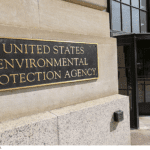Enforcement and (re)interpretation of the Clean Air Act’s new source review (NSR) rules will likely come into focus later this year as many of the key lawsuits against electric utilities are resolved. "It’s going to be a big year for NSR whether you’re a litigator, regulator, lawmaker, or member of the industry," says Tom Sansonetti, assistant attorney general for the U.S. Department of Justice’s (DOJ’s) Environment and Natural Resources Division.
Delay of game
The NSR quagmire has all the twists and turns of a Robert Ludlum novel that isn’t resolved until the last page. All the pending NSR lawsuits, and the inability of the EPA to promulgate new rules without being cowed by legal maneuvering or political pressure from congresspersons, makes me wonder if someone should get a 15-yard delay-of-game penalty.
For example, the Bush administration’s Clear Skies bill would replace NSR with an emissions cap-and-trade program modeled on EPA’s successful Acid Rain Program. A Senate subcommittee is considering Clear Skies, which would cap power plant emissions of NOx, SO2, and mercury at about 70% below 2000 levels beginning in 2018.
Even if Clear Skies isn’t enacted, the EPA is preparing to finalize limits in March for SO2 and NOx—the Clean Air Interstate Rule (CAIR)—to apply to 29 states. Also, the EPA must issue much-delayed mercury rules by March 15. You can be sure there will be another round of lawsuits before the Federal Register ink is dry.
Southern hostility
In August 2003, North Carolina District Court Judge Frank Bullock declined to dismiss the EPA’s case against Duke Energy for alleged NSR violations at eight coal-fired power plants but decided two major areas of the case—emission rates and project comparisons—in the utility’s favor. The judge said the Clean Air Act provisions on power plant emission increases resulting from unit upgrades should be measured on an hourly rather than an annual basis to determine if NSR rules were violated. Bullock also said that modifications to units should be defined as "routine" based on a comparison with similar projects across the industry, not projects unique to that particular unit.
On appeal, DOJ lawyers argued against Duke in mid-February before the 4th Circuit Court of Appeals. A decision to uphold the 2004 ruling would create a binding precedent and kill other NSR cases against utilities in that state and in other 4th Circuit southern-state jurisdictions. But even if Duke Energy wins its NSR court battle, the company must still clean up its plants under North Carolina law. A decision is expected this summer.
Elsewhere, the government’s case against American Electric Power for violations at 10 plants—the largest NSR suit—is set for June. A decision in a case on Illinois Power could come down at any time, and a lawsuit against Alabama Power has been briefed and is ready to go. Trials are slated for an East Kentucky Power Cooperative case this December and for a case against Cinergy next year.
Negative reinforcement
The Clear Skies bill and pending lawsuits have given some utilities reason to delay cleanup efforts and negotiations with the DOJ—exactly what environmentalists don’t want. Because the NSR cases won’t be settled until at least next year, some utilities are staying on the sidelines and praying for legislative or regulatory relief. According to Sansonetti, "Even if some cases are won, all it would take is one loss somewhere for someone to say, ‘Let’s take it up to the Supremes.’ " The litigation is likely to go on for years.
So where does that leave us? If Clear Skies dies, CAIR will be the only game in town in terms of across-the-board performance-based emissions requirements. Some critics of CAIR say it and Clear Skies do not go far enough to protect public health and complain that the Bush administration has been unwilling to compromise (and the art of compromise for the greater good seems to have become no more than road kill on thepath we’re now on) to make the rules work. Others point out that CAIR in its current form would not help states meet the PM2.5 standard deadlines.
In reality, state law is driving the emissions reductions at Duke Energy and others. Expect to see states fight back with their own clean-air laws and enforcement actions based on stack tests and direct releases of PM2.5. Some NSR lawsuits will continue, and more states may act against mercury even before the EPA issues its mercury rule.
So what we’re left with is the prospect of years of guerilla warfare played out in the courts and Congress. Based on past experience, I bet no one wins but the lawyers.








